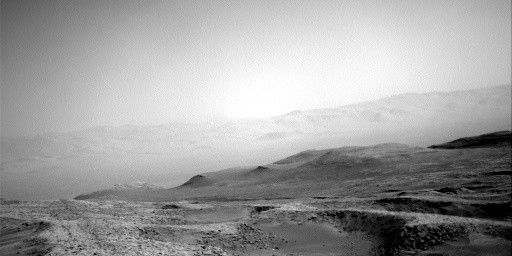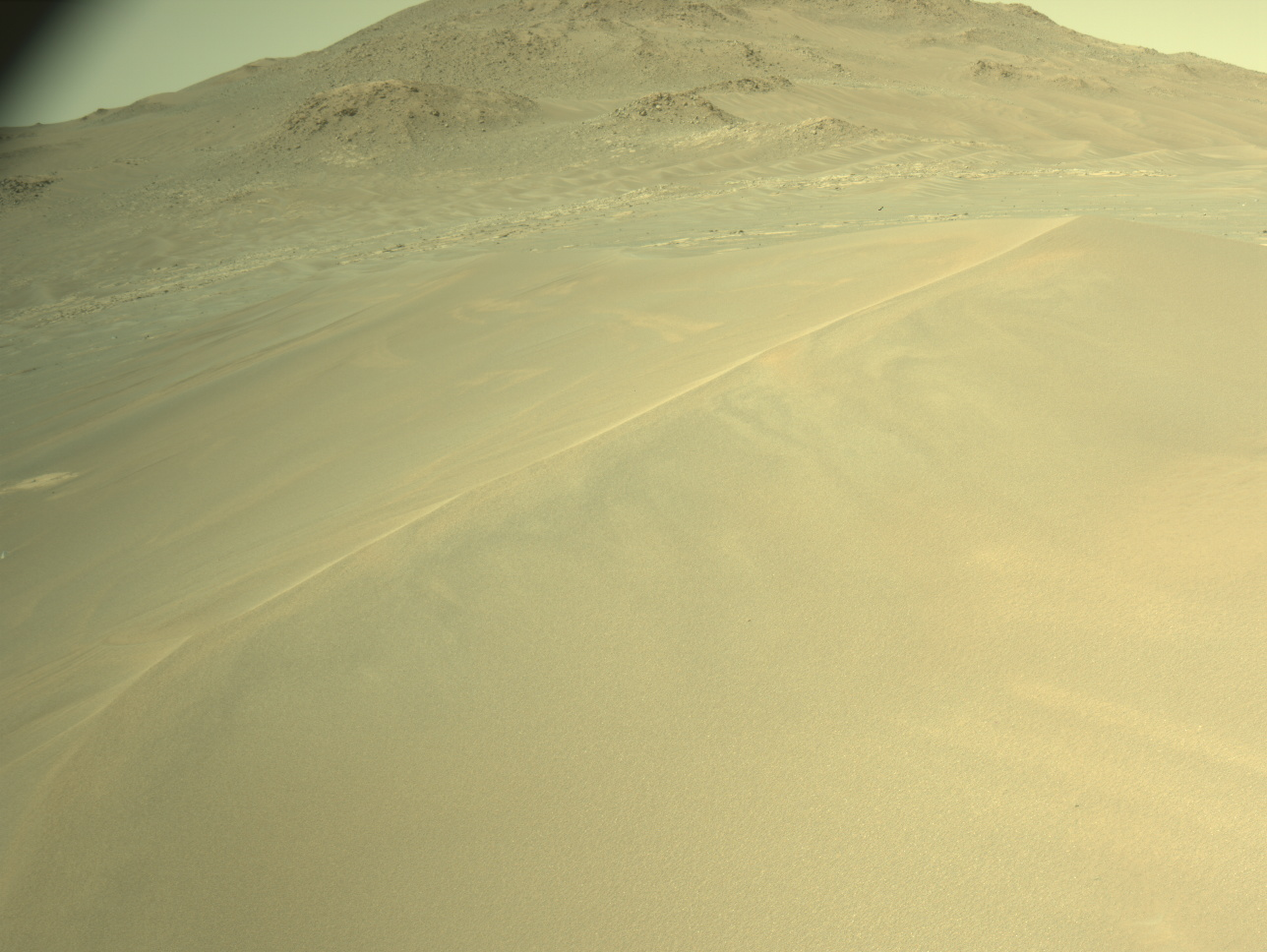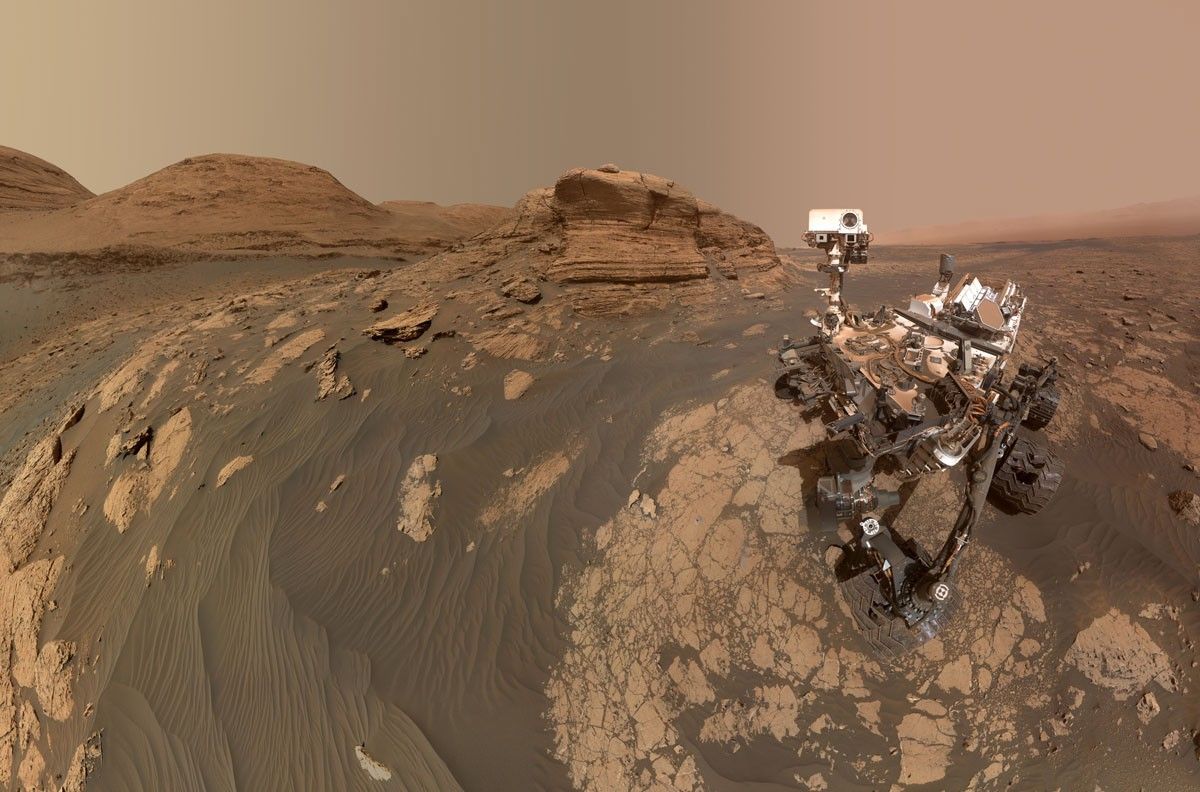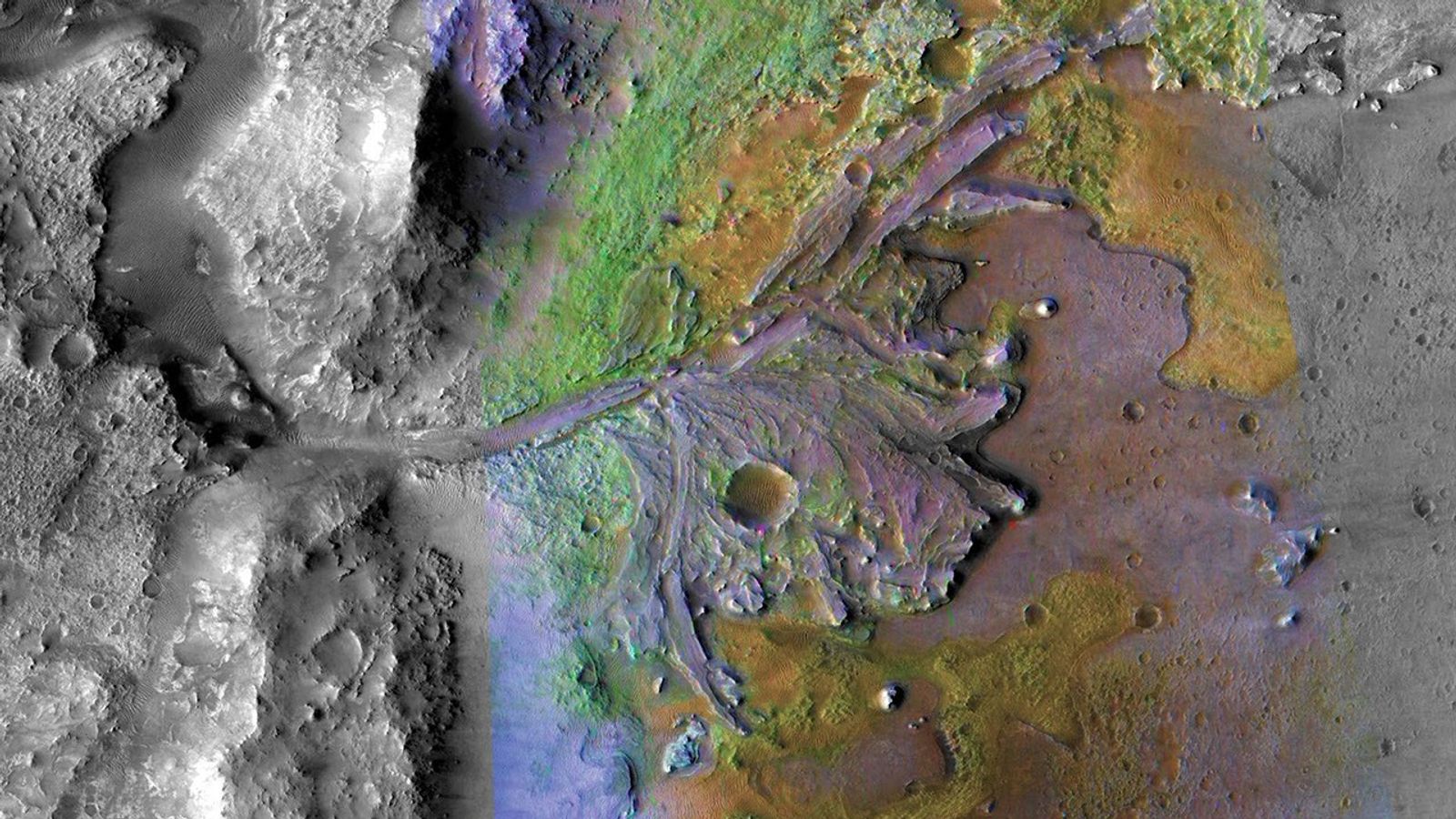Trailblazer
Long before Ingenuity’s historic first flight on Mars, engineers at NASA’s Jet Propulsion Laboratory in Southern California and their collaborators at AeroVironment Inc. were already moving the boundaries of human knowledge and aeronautic achievement with testing here on Earth. Flights by an Ingenuity prototype in 2016 showed that controlled, aerodynamic flight was possible in a Mars-like atmosphere for the first time. These flights were made possible by JPL’s 25-foot thermal-vacuum chamber, which is capable of replicating environments with a wide variety of temperatures, pressures, and compositions. Despite being one of the largest thermal-vac chambers in the world, it was still too small for significant horizontal motion, mostly limiting test flights to simple hovering. Engineers worked around this to some extent by building a custom wind wall to simulate Martian winds and the aerodynamic conditions seen in forward flight. Here, too, there were limits in how much and how well the conditions of Mars could be tested. Ultimately, the helicopter still had much to prove when it spun up its rotors for its first real flight test on the planet for which it was designed. This historic first flight on April 19, 2021, was performed flawlessly, matching its performance in countless chamber tests almost exactly.
That first, modest 3-meter (9-foot) hover flight, though impressive, was still quite far from testing Ingenuity’s limits. Over the next six months, the Ingenuity team methodically probed the helicopter’s abilities, pushing it just a little harder with each flight. Altitude was increased to 5 meters on Flight 2, and then 10 meters on Flight 5. Forward flight was attempted for the first time on Flight 2 at a cautious 0.5 m/s. By Flight 10, Ingenuity was flying at an altitude of 12 meters (40 feet) and a speed of 5 meters per second (11 mph), showing just how far engineers from NASA and AeroVironment had pushed her since those early chamber tests half a decade earlier.
These early-mission records would remain largely in place for the next year as the Ingenuity team transitioned the vehicle from a simple technology demonstrator (akin to the first Wright brother’s airplane) to a functional science and scouting asset on the surface of Mars. Learning how to coordinate the activities of the rover and the helicopter to take advantage of Ingenuity’s unique capabilities (and limitations) took time and effort. To understand the audacity of the attempt, one might imagine how difficult it would have been to attempt to provide regular commercial passenger service with the Wright Flyer in 1903.
Reaching the limits
By early 2023, Ingenuity found itself literally racing for its life up the Jezero river delta, and the limits imposed by these early-mission speed/altitude records made it difficult to stay ahead of the rover in the narrow channels of the Jezero delta. To understand the mission impacts of Ingenuity’s flight envelope, it’s necessary to discuss the general set of constraints that shape the process of flight planning for Ingenuity.
- Energy – Flights draw enormous amounts of energy from the onboard battery in a short period of time. As the battery is discharged during a flight, its ability to support these high power levels also decreases. Below a certain level, the battery won’t be able to meet the power needs of the helicopter, leading to destabilization or a system-wide brownout, both of which would result in a crash.
- Heat – Flights generate significant heat in various components of the helicopter. If flights continue for long periods of time, components could begin to overheat and fail, resulting in a crash. The time when this would occur depends on the components’ starting temperature, the environment in which they’re operating, and the exact composition of the flight.
- Terrain – Martian terrain directly impacts navigation performance, and highly variable terrain can cause control effort spikes which also create power spikes that the battery needs to support. In addition, sufficiently rock-free airfields define the set of paths available to the helicopter.
- Safety and Landing Accuracy – The constraints and capabilities highlighted above can drive Ingenuity far off course, even if not severely enough to interrupt the flight. This could result in the helicopter landing in an unsafe location, resulting in a crash. All flights must be studied in advance to ensure vehicle safety during the flight and at landing.
The common denominator in all these constraints is time. Saving flight time saves energy, reduces heating, and provides more freedom to use slower speeds to tiptoe around disruptive terrain that might otherwise endanger or significantly degrade the landing accuracy of the helicopter. Higher speeds and higher accelerations reduce the time needed to execute a given flight path. Higher altitudes permit higher speeds, as the wider field of view helps to keep ground features in view of Ingenuity’s navigation camera longer, counteracting the effect of increased speed. Expanding Ingenuity’s flight envelope had the potential to relax flight planning constraints and allow Ingenuity to operate more effectively alongside Perseverance. The team resolved to change focus, actively looking for opportunities to resume testing and expand the flight envelope. Ingenuity would once again return to the business of pushing the boundaries of Martian flight and setting countless flight records along the way.
A Return to Form
This new approach started paying dividends on Flight 45, where new records for both speed and acceleration were set. Maximum flight speed was increased to 6 m/s and horizontal acceleration was increased from the previous maximum of 0.75 m/s^2 (first used in Flight 25’s record-setting run across Seitah) to a new, more aggressive 0.85 m/s^2. Shortly afterwards, during Flight 49, the maximum speed was increased to 6.5 m/s with a hover of 16 meters at the end of the flight. The maximum altitude ceiling was pushed out again just 10 days later during Flight 50 with a 2-meter increase to 18 meters.
Still, such work was difficult to do while maintaining Ingenuity’s normal operational schedule. Significant effort is needed to keep Ingenuity flights synchronized with the rover’s movements over difficult terrain while staying in communications range. Finally, as Perseverance approached the Mandu Wall region in September of 2023, the Ingenuity team saw the opportunity we needed. The relatively permissive communications environment and flat terrain around Jurabi Point offered the perfect environment to perform the type of testing that the lower Jezero delta regions had made so difficult.
Somewhat ironically, for all the focus on flying faster, one of the highest-priority tests involved reducing the vertical landing speed below the standard 1 m/s descent rate. This capability was a priority for the next planned Martian helicopter, the Sample Recovery Helicopter (SRH), which is being designed to retrieve the sample tubes dropped by Perseverance. The initial design of SRH uses Ingenuity as a starting point but carries extra mass in the form of a robotic arm and wheels needed to enable sample retrieval along with the sample tube itself. These additions increase the predicted stress on the landing gear during touchdown. A softer landing would be easier on the landing gear but harder for the touchdown detection algorithm to identify, and, at the extremes, can result in multi-contact events that could cause a crash. On Earth, landing at Mars gravity levels is difficult to test in a realistic manner and must instead be partially tested across multiple venues. Fortunately, we already have a flying vehicle on Mars and the team could use Ingenuity as a testbed, collecting real world data on landing speeds needed by the SRH project. After careful study and re-tuning parameters around a 0.75 m/s descent speed, Flights 57-59 demonstrated the soft touchdown on both flat and sloped terrain.
Flight 59 also served the purpose of increasing the maximum altitude at hover to 20 meters, allowing forward flight up to 16 meters. Typically, 4 to 6 meters of altitude ceiling are held in reserve to account for slant range when tilted and for variable terrain and the resulting control system response. This enabled Flight 60 to set a new maximum speed record of 8 m/s as the helicopter flew to Jurabi Point. Flight 61 was a near-repeat of 59 that further expanded the flight regime. The ascent speed was increased to 1.5 m/s and descent speed to 1.2 m/s, both previously just 1 m/s, saving around 10 seconds on the typical flight. The flight also achieved the highest altitude to date at 24 meters. This was a large milestone as it surpassed the analytical worst-case drop-out of the laser range finder (LRF) which is used to measure Ingenuity’s altitude above ground level. If the LRF drop-out extends longer than 2 seconds, the helicopter will fault and land (likely safe in the case of a hover flight, but possibly fatal during forward flight). This altitude also enabled the team’s goal of forward flight at 10 m/s demonstrated in Flight 62 at an altitude of 18 meters in forward flight. Of course, Ingenuity hadn’t forgotten its partner on the Red Planet. In the middle of this record-setting flight, Ingenuity managed to capture several high-resolution photos of the Jurabi Point region many sols ahead of the rover’s arrival.
In summary, this flight test campaign has been a tremendous success, proving that our intrepid rotorcraft is still capable of breaking records and pushing the envelope 2 ½ years after landing on Mars. Over the last 9 months, the Ingenuity team has doubled our maximum flight altitude limit from 12 to 24 meters, nearly doubled our max speed from 5.5 m/s to 10 m/s, increased our maximum horizontal and vertical acceleration, and validated both soft- and hard-landing approaches. Despite this rapid pace, the team isn’t slowing down. We intend to keep pushing to see what new things can be learned and what new capabilities can be mastered with our small helicopter on the Red Planet.
Written by Travis Brown, Chief Engineer, and Martin Cacan, Chief Pilot, Ingenuity Mars Helicopter at NASA’s Jet Propulsion Laboratory


































